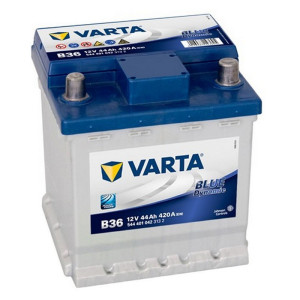Price
Regular price €13.02 -10% €11.72
The drums is one of the essential elements of the proper functioning of a car-free car. Without it, it would be impossible to start the engine, power electrical equipment or use accessories such as headlights, wiper-ice cream or car radio. A quality battery guarantees reliability, safety and comfort of driving.
The battery stores the energy needed to start the engine and power the vehicle's electrical circuits when the engine is stopped. It also plays a shock absorber role to stabilize the tension of the power grid and protect electronic components.
• Provide the start current for the engine.
• Furnle the power accessories to stop (fires, ventilation, car radio).
• Stabilize the voltage in the power grid.
• Provide the proper functioning of electronic calculators and modules.
• Support the alternator during high electrical solicitations.
A used battery can leave you down without warning. Several symptoms make it possible to detect a failing battery.
• Slow start or need several attempts.
• Battery indicator on the dashboard permanently.
• Less powerful headlamps, acceleration intensity variation.
• Electrical accessories that work irregularly.
• Battery that discharges quickly even after charging.
• Battery too old (over 4 or 5 years old).
• Alternator that does not load anymore properly.
• Parasitic consumption (light or accessory that remains lit).
• Extreme temperatures (gel or excessive heat).
• Bad maintenance (oxidized terminals, low level).
Before replacing your battery, it is advisable to perform a simple control to check if it is actually the cause of the failure.
• Measure the battery voltage using a multimeter (12.4 to 12.7 V at the stop).
• Check the motor voltage running (13.8 to 14.4 V) to check the load.
• Visually inspect the lugs and cables (oxidation, tightening).
• Check for leaks or swelling of the battery.
• Test with a load tester if available.
• Clean the terminals regularly with a metal brush.
• Lightly grease the lugs to prevent oxidation.
• Reload the battery if the vehicle remains immobilized long.
• Avoid deep landfills that reduce its life.
• Check the status of the alternator and charging circuit.
Change the battery is a simple operation but requires some safety precautions to avoid short-Circuit.
• Cut the contact and remove the key.
• Disconnect the negative terminal first and then the positive.
• Remove the battery carefully (weight and acid presence).
• Clean the bracket before installing the new battery.
• Check that the new battery has the same dimensions and capacity.
• Install the new battery and correctly tighten the lugs.
• First connect the positive terminal, then the negative.
• Start the vehicle to check that everything works.
• Check the motor load voltage running.
• possibly reset electronic equipment if necessary.
Pro VSP proposes a complete selection of batteries Suitable for cars without a license, with different capacities and technologies. Each product sheet details dimensions, AH capability, startup intensity and compatibility to prevent control error.
To extend the life of your battery and avoid failures, consider using a suitable charger. Find our selection of chargers and tools here: Car battery chargers without license.
The price of a car battery without a license depends on its technology, capacity and brand. The maintenance-free or AGM batteries are more expensive but usually last longer. Also plan the cost of assembly if you go through a professional.
• Classic battery or AGM as needed.
• Protective grease for terminals.
• Battery tester or workshop control.
• Charging loader.
• Hand-if assembly in garage.
• Use the vehicle regularly to keep the battery charged.
• Avoid leaving electrical accessories on motor coupé.
• Keep clean and tight terminals.
• Reload the battery if it remained discharged several days.
• Check the status of the charging circuit at each vehicle maintenance.
Also find our community on our forum Avenir VSP !
